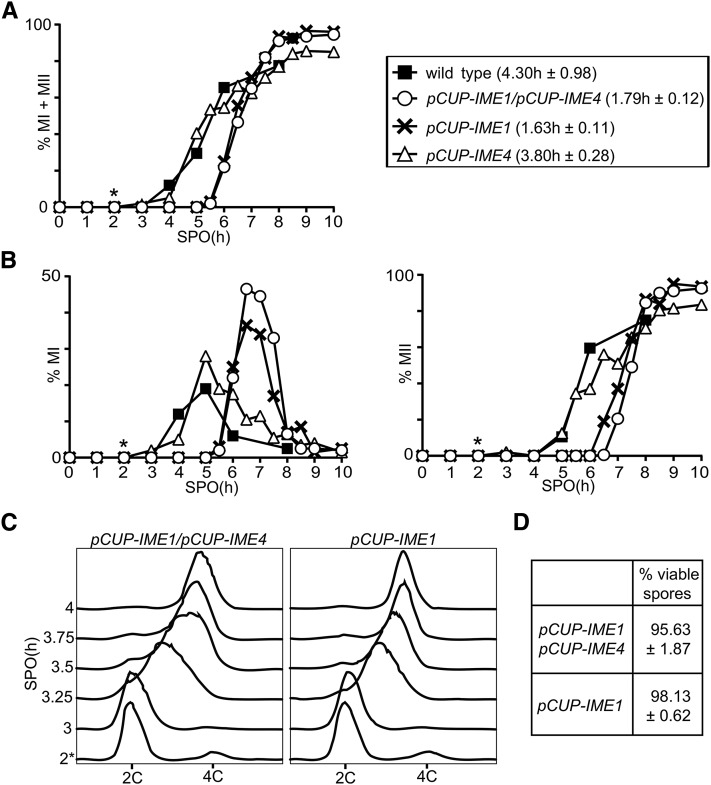Figure 3.
Induction of IME1 is sufficient to induce gametogenesis synchronously. (A) Kinetics of meiotic divisions in wild-type cells (FW1511), cells harboring IME1 and IME4 fused to the CUP1 promoter (pCUP-IME1/pCUP-IME4) (FW1810), pCUP-IME1 (FW2444), or pCUP-IME4 (FW2480). Cells were grown overnight in YPD, and shifted to SPO (1.0% w/v potassium acetate supplemented with adenine, uracil, and amino acids); 50 µM copper (II) sulfate was added 2 hr after the cells were transferred to SPO. Samples were taken at the indicated time point, fixed in ethanol, nuclei were stained with DAPI, and DAPI masses were counted. Cells that harbored two, three, or four DAPI masses were classified as cells undergoing meiosis I or meiosis II (% MI + MII). For each time point, at least 200 cells were counted. We also computed the time or period taken for 75% of the cells to complete meiotic divisions (see Materials and Methods for details). This number is displayed in brackets next to the legend, and represents the mean number of hours followed by the SEM of three independent experiments. (B) Similar to A except that the percentages of bi- (left panel), tri-, and tetra-nucleate (right panel) cells are shown. (C) Flow cytometry analysis of DNA content of pCUP-IME1/pCUP-IME4 (FW1810) and the pCUP-IME1 (FW2444) cells that were induced to sporulate as described in (A). Samples were taken at indicated time points, fixed, and DNA content was measured by propidium iodide staining; 50 µM copper (II) sulfate was added 2 hr after the cells were transferred to SPO. At least 50,000 cells were analyzed at each time point. (D) Spore viability of the pCUP-IME1/pCUP-IME4 (FW1810) and the pCUP-IME1 (FW2444) cells that were induced to sporulate as described in (A). Tetrads were collected 24 hr after induction, dissected, and assayed for viability (n = 160 spores). The average result and the SEM of three independent experiments is shown. *, time of induction.

